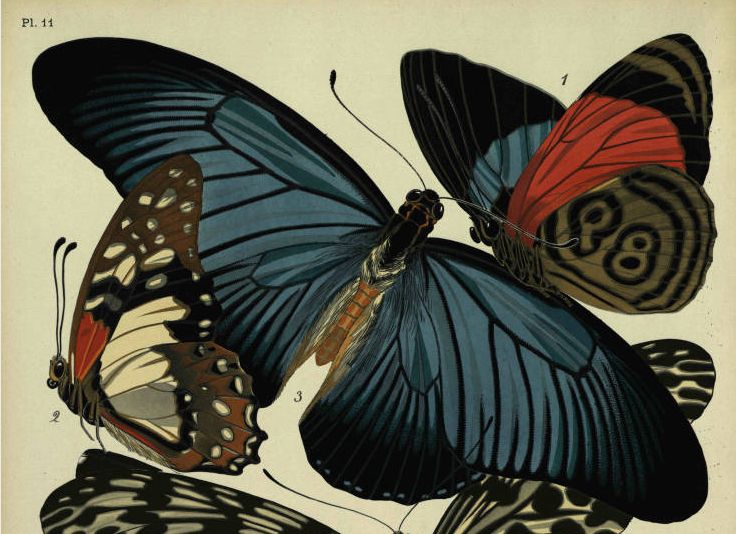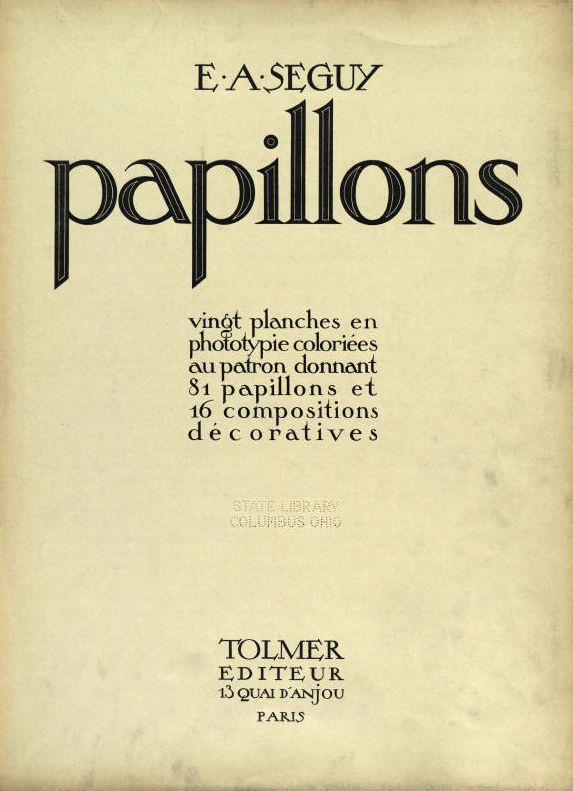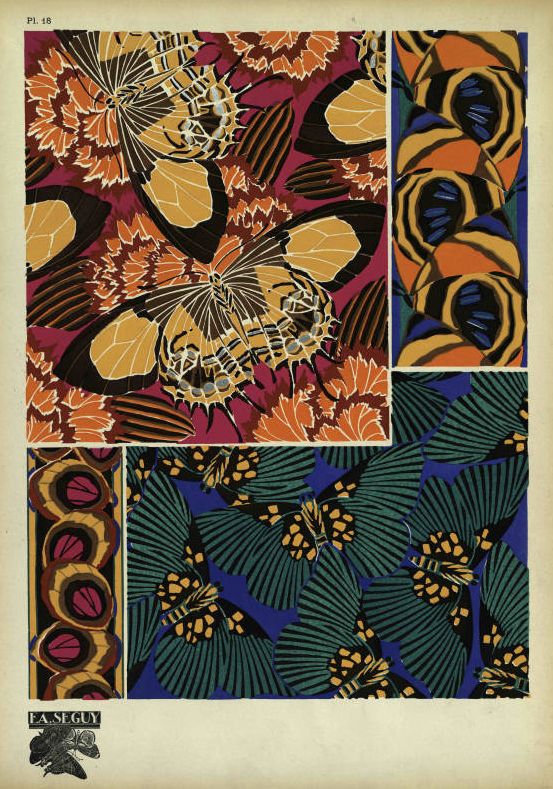Vibrancy in Nature: Papillons and the Art of E.A. SeÃŒÂguy


By the time March rolls around, Ohioans are usually ready for warmer weather. Indeed, though this past winter was largely uneventful and mild, warmer spring temperatures are a welcome relief. Still, despite spring having officially sprung on March 20, we still have a bit of time until the outdoors are filled with color.
To shorten the wait and to appease those of us who are impatient, Ohio Memory would like to share Papillons with our readers. Papillons: vingt planches en phototypie colorieÃŒÂes au patron donnant 81 papillons et 16 compositions deÃŒÂcoratives by E.A. SeÃŒÂguy contains twenty plates depicting butterflies in a multitude of vibrant colors. The plates themselves were produced through a method called pochoir. According to the Smithsonian Libraries, pochoir
“…begins with the analysis of the composition, including color tones and densities, of a color image. Numerous stencils were designed as a means of reproducing an image. A craftsman known as a découpeur would cut stencils with a straight-edged knife. The stencils were originally made of aluminum, copper, or zinc but eventually the material of choice was either celluloid or plastic. […] Stencils created by the découpeur would be passed on to the coloristes. The coloristes applied the pigments using a variety of different brushes and methods of paint application to create the finished pochoir print.”

This complicated process results in a vibrancy that is difficult, maybe impossible, to reproduce mechanically. According to the Smithsonian, however, “the manual aspect of pochoir has been both its most valuable attribute and one of its greatest failures as a medium,” as it is both labor-intensive and time-consuming. However, “each print is unique because it is done by hand; each remains vivid in both a tactile and visual sense.” Frankly, pochoir makes visually stunning art that is a joy to view, as Papillons exemplifies.
As for the artist, E.A. SeÃŒÂguy, little is known outside of his artistic works. Sources give conflicting information, though he was likely born in the last decade of the 19th century, and he died sometime in the 1980s in France. He was most active in the art world during the turn of the 20th century through the 1930s, and his style is reflective of Art Nouveau (see an essay on this style at The Met) and Art Deco (The Art Deco Society of New York has additional information on this style here), both of which were on the cutting edge of the art scene during the period that SeÃŒÂguy was creating his works. In fact, SeÃŒÂguy published eleven art folios from 1900 to 1931, but appears to have discontinued publication after that period.
A second publication by SeÃŒÂguy, Samarkande, will be shared at a later date. Meanwhile, we hope you enjoy Papillons, available for your viewing pleasure through Ohio Memory, and that its pages bring color to your early spring days!
Thank you to Shannon Kupfer, Digital Initiatives Librarian at theState Library of Ohio, for this week’s post!



Leave a Reply
You must be logged in to post a comment.